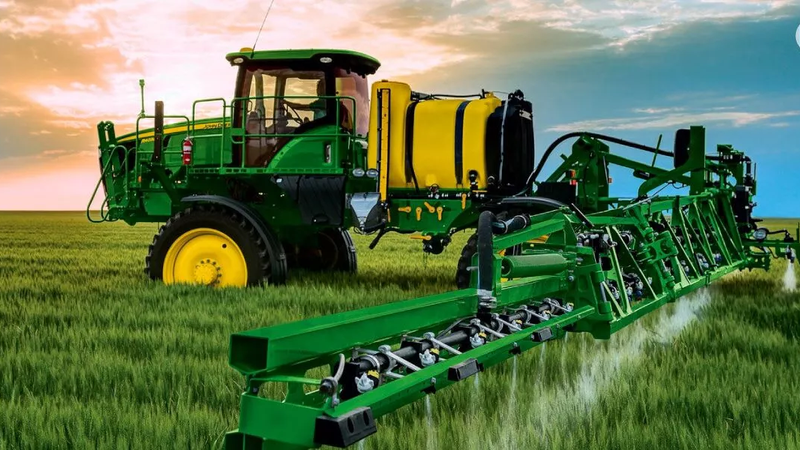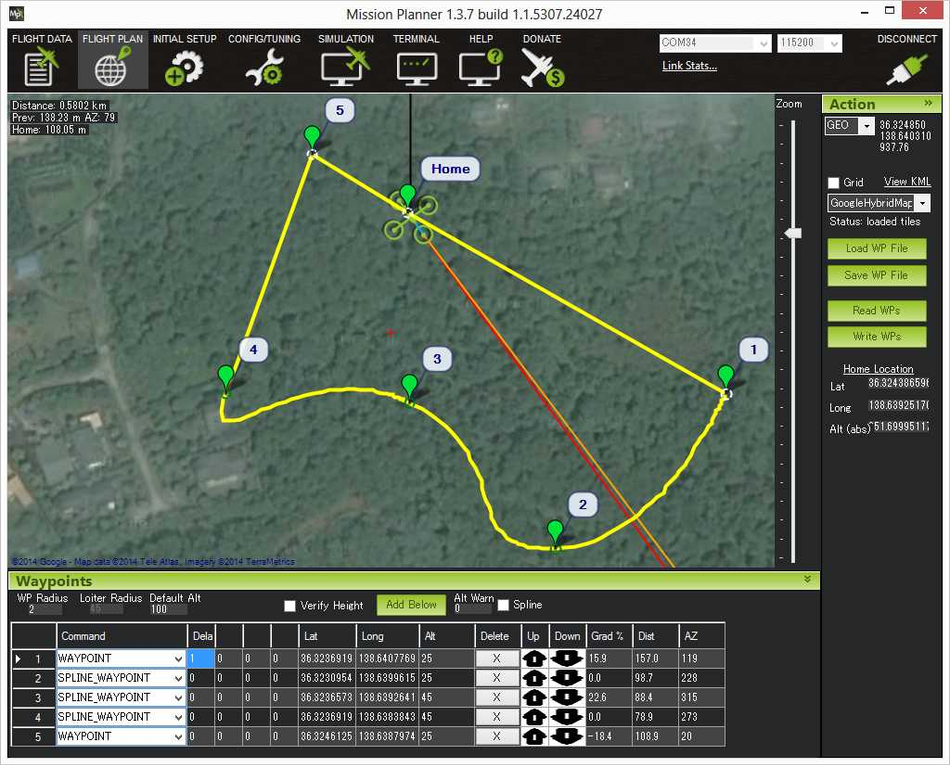Precision Agriculture with SBCs: Exploring the Benefits and Applications on Machinery
How SBCs can enhance precision agriculture machinery and optimize production and farmers' resources.

Image credit: Rishabh
According to the Food and Agriculture Organization of the United Nations (FAO), the four main principles of food security are availability, access, utilization, and stability. However, these principles have been frequently impacted by climate change, which has caused adverse rain and weather scenarios. An alternative to mitigate these problems and ensure food security is using Precision Agriculture (PA).
PA is a management approach that uses high-technology sensors to collect precise data and cutting-edge analysis tools to improve crop and livestock production. Based on the collected data, farmers can obtain crucial data, such as crop status, weather forecasts, etc., and employ it in machinery to improve food security. With real-time yield state analysis, PA can support management decisions that increase agricultural production's productivity, quality, profitability, and sustainability.
When applied to agriculture machinery, PA can benefit several processes in the field, including:
- Planting: seed drills, broadcast seeders, and seed cum fertilizer drills;
- Irrigation: pumps and sprinklers;
- Fertilizing and pest control: manure spreaders and sprayers, respectively, drones;
- Harvesting: combine harvesters, mowers, and reapers.
Despite the existing automation in agriculture machinery, PA can incorporate data collection systems and decision processes to help improve efficiency, reliability and resource usage in these systems. For example, a micro-irrigation system that uses PA to identify areas with high or low soil moisture and provides a variable water flow helps growers plan the irrigation effectively.
However, the implementation of PA on machinery demands devices with high-processing capabilities to ensure real-time data collection and flexibility to cover multiple applications. Single-board computers (SBCs) are the ideal candidate for these applications due to their high-processing power, flexibility, and portability.
This article explores how SBCs can be used for precision agriculture applications in machinery to boost production, optimize resource usage, and minimize food security issues.
SBCs advantages for PA applied to machinery
SBCs are complete computers built on a single circuit board, featuring all the necessary components to run the software and perform tasks. They are designed to be small, low-cost, and energy-efficient, which makes them ideal for various applications, including PA.
When employed in agriculture machinery, SBCs can be used for a wide range of applications. They can be combined with sensors to acquire and display meaningful data from the field in real-time, such as the seed counter for each seed drill line. In more advanced applications, besides counting seeds, the SBC could control the number of seeds per square foot, for example.
Several features make SBCs well-suited for PA applications in agriculture machinery, including:
- Low power consumption enables remote applications without requiring a large energy storage system.
- Multiple I/O’s allow the connection of several sensors and displays to show information and control actuators in real-time.
- SBCs run operating systems, like Linux, enabling the use of advanced, open-source software available on the market.
- Their flexibility due to the input/output interfaces, software compatibility, and high processing power simplifies the development of tailored solutions for specific machinery needs.
- The high processing power enables it to process large amounts of data in a timely fashion from multiple sensors, which can support the PA decision process.
Applications of SBCs in machinery for PA
SBCs have the capability to collect and process data in near-real-time, making them ideal for creating monitoring systems to assist conventional machinery, such as precision planting and harvesting. SBC tracking systems based on specialized global navigation satellite systems (GNSS) can guide tractors, combines, or self-propelled sprayers, providing information to the driver through an interactive display. Additional systems, also based on SBCs, can acquire data regarding the production and quality of harvested crops to support farmers' decision process. By combining geolocation, production, and crop quality information, farmers can identify areas requiring additional care for the next season, such as acid correction or additional fertilization.
When using SBCs to enhance fertilization, sensors to measure the soil NPK level, for example, can provide real-time information regarding soil nutrient levels. Based on the collected data, the SBCs’ application defines the optimal amount of fertilizer dispensed by fertilizer machinery based on the crops' specific needs. This precision fertilizer application reduces waste, minimizes runoff, and can lead to significant cost savings.
In addition to optimizing fertilization, SBCs can also perform crop health monitoring. Using RGB, multispectral, hyperspectral, or thermal cameras to capture images of crops in different wavelengths, SBCs can use computer vision algorithms to identify patterns and anomalies that may indicate diseases. Other aspects of crop health, such as growth rate, leaf area, and chlorophyll content, can also be evaluated to optimize irrigation. While satellite images are an option of image source, the image quality acquired using drones is significantly better, making it the best choice. Therefore, in such applications, SBCs can control the camera/sensor, process the images, and control the drone.
SBCs' image-processing capabilities can also benefit pesticide sprayer machinery. Cameras can capture images of the crops as the machinery moves through the field. The SBC can analyze the images using image processing algorithms and identify areas that require treatment. With this information, the SBC can control the sprayer nozzles to apply the appropriate amount of pesticide to these areas, avoiding overspray and minimizing waste. The real-time nature of this approach allows the system to adapt to changes in the field environment, such as changes in crop density or pest infestation levels. However, depending on the complexity of the algorithm and the amount of data collected, multiple SBCs may be necessary, creating subsystems to process data and control portions of the sprayer nozzles.
SBC-based drones for crop monitoring
Drones have become increasingly popular in the agricultural industry for monitoring crop health, with the potential to enhance crop production and farm efficiency. Through regular crop surveys, drones can assist farmers in tracking changes over time, leading to improved crop management. This section outlines the fundamental steps involved in setting up a drone for crop health monitoring. By using this approach, you will not be restricted to a specific processing platform for storing and analyzing image data.
Parts list
The basic structure of a drone for crop monitoring comprises several parts. A list containing the essential components and examples of commercial modules you can use is presented as follows:
- Frame: It is the basic structure of the drone to which all the other components are attached (an example is the Tarot FY690S Hexacopter Frame).
- Motors: They provide the power required to lift the drone off the ground (a popluar example is the Readytosky 920KV).
- Electronic Speed Controllers (ESCs): They regulate the motors' speed (for example, 40A OPTO 2-6S).
- Battery: It provides power to the motors and other electronic components (e.g., Turnigy Graphene Panther 3000mAh 4S 75C).
- Flight Controller: It is the brain of the drone that controls its movement and stability (e.g., Pixhawk PX4).
- Propellers: They are attached to the motors and generate the lift required for the drone to fly (access this guide to learn how to select and install the propellers).
- GPS Module: It provides location data to the drone and enables it to fly autonomously (e.g. BN-180 GLONASS NAZE32).
Choosing the SBC
Now that you have selected the essential drone components, the next step is to choose the appropriate processing unit. Using an SBC offers several advantages, including running parallel applications such as image algorithms, navigation software, and communication protocols. Furthermore, it can replace the flight controller and manage data storage from image acquisition.
The Radxa ROCK 4 SE is an option for this application. It features a powerful Hexa-core processor with big LITTLE™ Arm® Dual Cortex-A72® CPU, Quad-core Cortex-A53 and Arm Mali™ - T860MP4 GPU, providing high processing power. It also includes 4GB LPDDR4 RAM, an M.2 connector for eMMC or SSD, and camera support. For connectivity, the Radxa ROCK 4 SE offers two SPI/I2C buses, two UART, four USBs, one Ethernet connection, in addition to 802.11 Wi-Fi and Bluetooth 5.0. The product brief document provides a comprehensive description of the Radxa ROCK 4 SE. To start using it, refer to Debian and Ubuntu guides.
Selecting the camera
Specialized cameras that can capture a wide range of wavelengths simultaneously are currently available in the market. One example is the Micasense Rededge-MX, which covers spectral bands blue, green, red, red edge, and near-IR. These cameras also come equipped with control, storage, and GPS systems that are not connected to the drone. However, these commercial cameras are often expensive, which makes them unaffordable for some farmers. Therefore, the drone's responsibility is limited to following the flight plan.
RGB-D and thermal sensors offer a more cost-effective alternative for image acquisition. For instance, the AMG8833 IR thermal camera can provide images with temperature measurement data from 0°C to 80°C and uses I2C for communication. In contrast to the Micasense Rededge-MX, the SBC would be responsible for controlling image acquisition and creating a database that links the image data with the current drone position obtained from the GPS module.
Controlling the drone and processing images
Controlling drones or developing flight plans can be a complex process. However, Python programmers can use two open-source libraries that simplify this task. PX4 autopilot and ArduPilot provide interfaces for interacting with autopilot systems. PX4 autopilot is a complete open-source autopilot system, while ArduPilot has a rich set of features for controlling and managing unmanned vehicles. These features include autonomous mission planning and execution, real-time telemetry, and video streaming.
PX4 autopilot and ArduPilot usually are installed in dedicated hardware boards with lower CPU power than the Radxa ROCK 4 SE. However, it is still possible to use these libraries in any Linux-based SBC.
To simplify installation processing provide Docker containers. You also have the option to use a dedicated board to run the autopilot and use the Radxa ROCK 4 SE as a companion computer. In this case, the companion computer can use all the MAVLink data produced by the autopilot to make intelligent decisions during flight.
Open-source solutions are also available for image processing, enabling valuable information extraction at a lower cost than commercial tools. One such option is the FIELDimageR software package designed to analyze and process images of agricultural fields. The software provides tools for analyzing plant traits, including plant height, biomass, and leaf area, and for detecting stress factors such as drought, nutrient deficiency, and disease. In addition, FIELDimageR includes features for spatial analysis and mapping.
Conclusion
SBCs have numerous applications in precision agriculture, assisting farmers in optimizing resource use, reducing waste, and improving farming practices. The Radxa ROCK family of SBCs offers high processing power and a wide range of connections, making them a flexible and cost-effective solution for developing tailored solutions to meet farmers' needs. The combination of SBCs and PA is a promising alternative for enhancing agricultural productivity and achieving food security.
Co-Author: Heitor José Tessaro
References
[1] Bruce Erickson, Scott W. Fausti. 2022. “The role of precision agriculture in food security”SafetyCulture, “The Benefits of Using Agricultural Machinery”
[2] Lamar Burton, K. Jayachandran and S. Bhansali, 2020. “Review—The "Real-Time" Revolution for In situ Soil Nutrient Sensing”
[3] Ecological Informatics, “Using a single-board computer as a low-cost instrument for SPAD value estimation through colour images and chlorophyll-related spectral indices”
[4] Farm management, “GPS technology as an integral part of precision agriculture”
[5] Li, H., Guo, C., Yang, Z., Chai, J., Shi, Y., Liu, J., Zhang, K., Liu, D. and Xu, Y., 2022. “Design of field real-time target spraying system based on improved YOLOv5”





